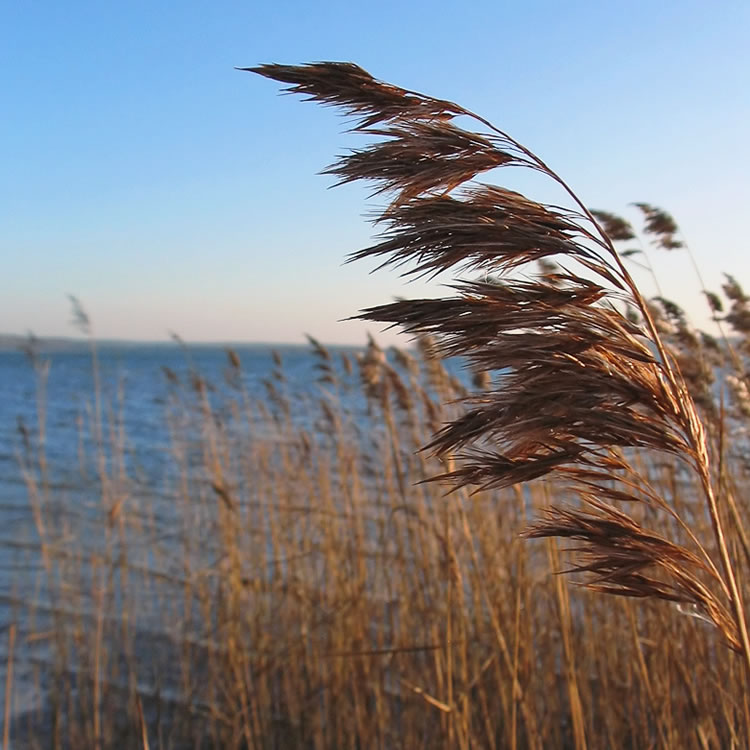Common reed

Community type
Habitat type
Tidal wetlands and macrophytes beds
The common reed is a robust perennial plant growing to 4 m high. It loves fresh water 0.2–1 m deep and also tolerates brackish waters of estuaries where rivers meet the sea. Due to this wide range of habitat tolerances it is common in tidal wetlands, freshwater swamps and marshlands throughout the Derwent estuary.
In preferred conditions the common reed can grow up to 4 m tall, and densely inhabit the banks and shallow waters of wetlands and rivers. It provides a range of ecosystem services. Due to their density, stands of common reeds provide habitat for birds and amphibians. Swamp harriers and black swans often nest among them, gaining concealment from predators, and shelter from the wind. Common reeds also improve bank stabilisation and purify water by up-taking nutrients during their rapid growth each spring. Their ability to clean polluted water means they are often planted in urban water sensitive design to treat stormwater and waste-water.
Large flower heads appear during September and October, are retained for many months and look like dusters used in houses.
